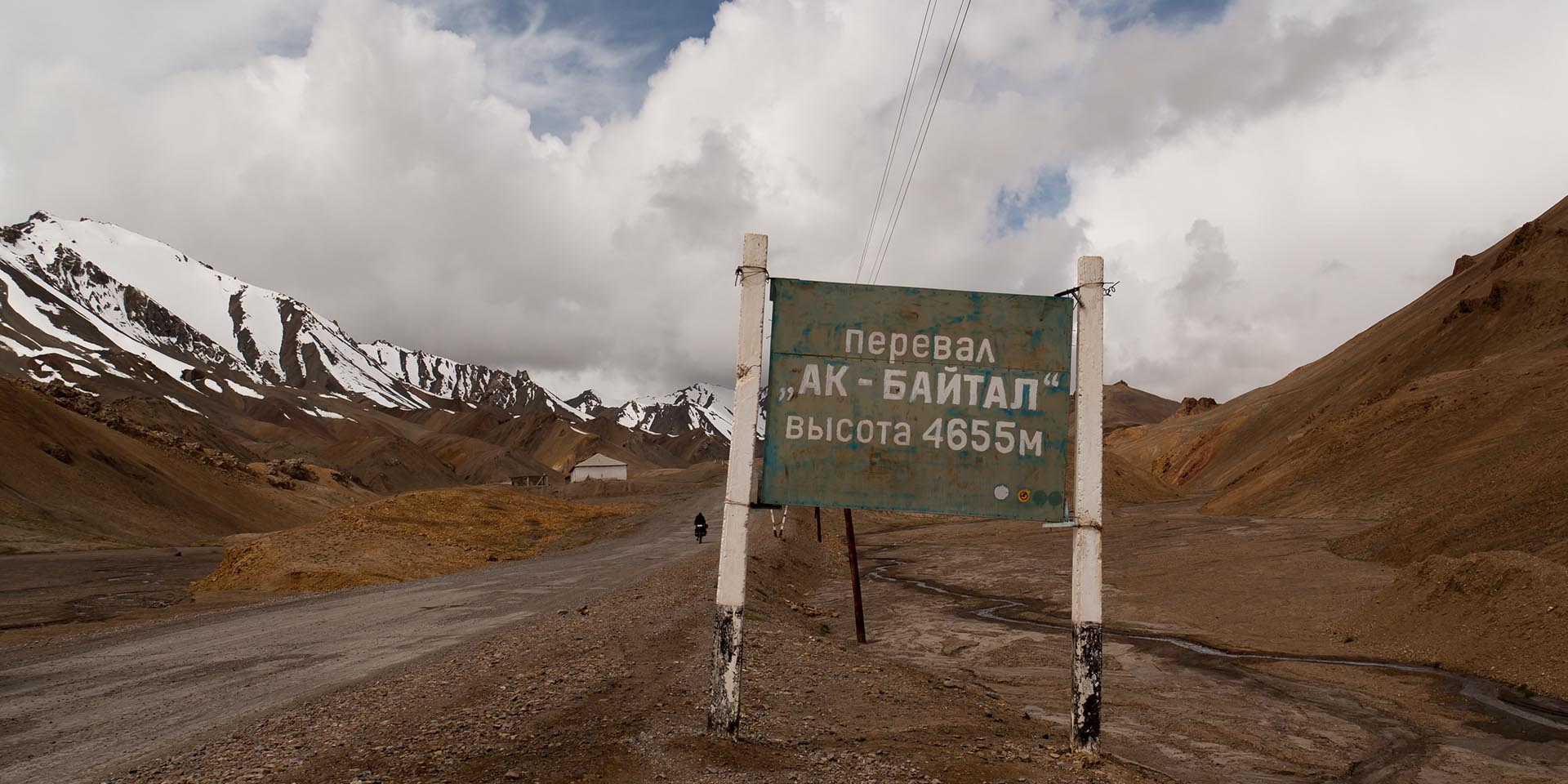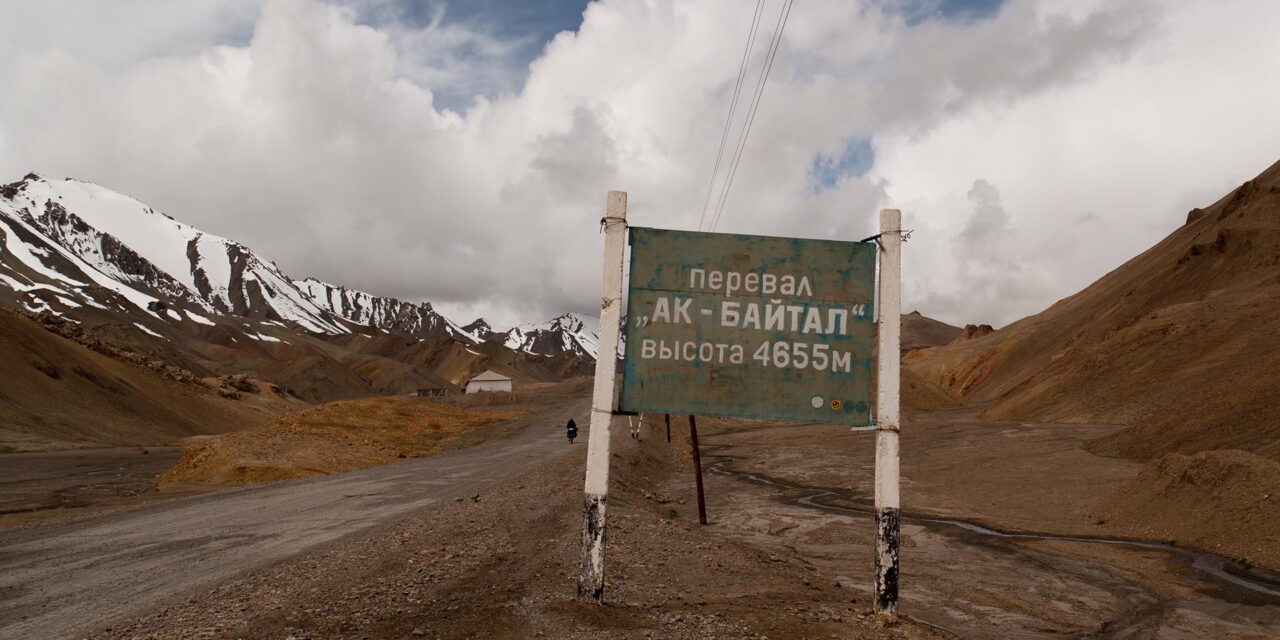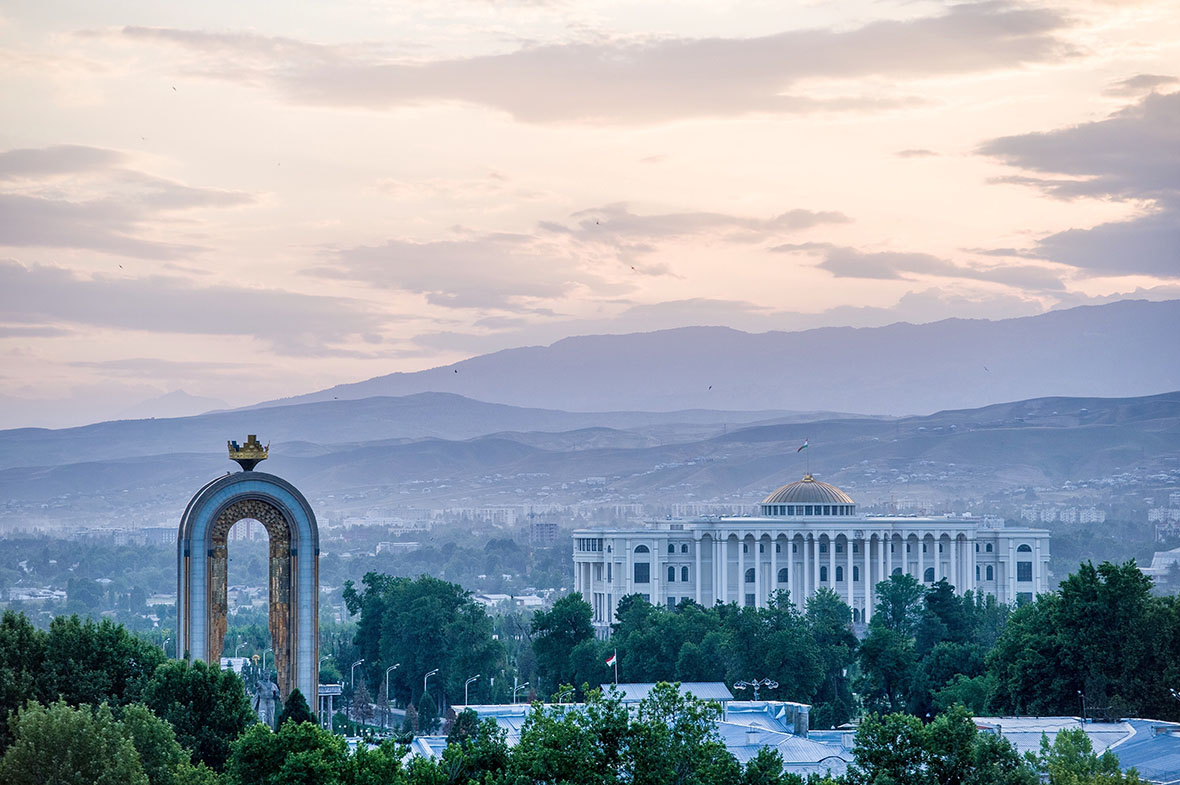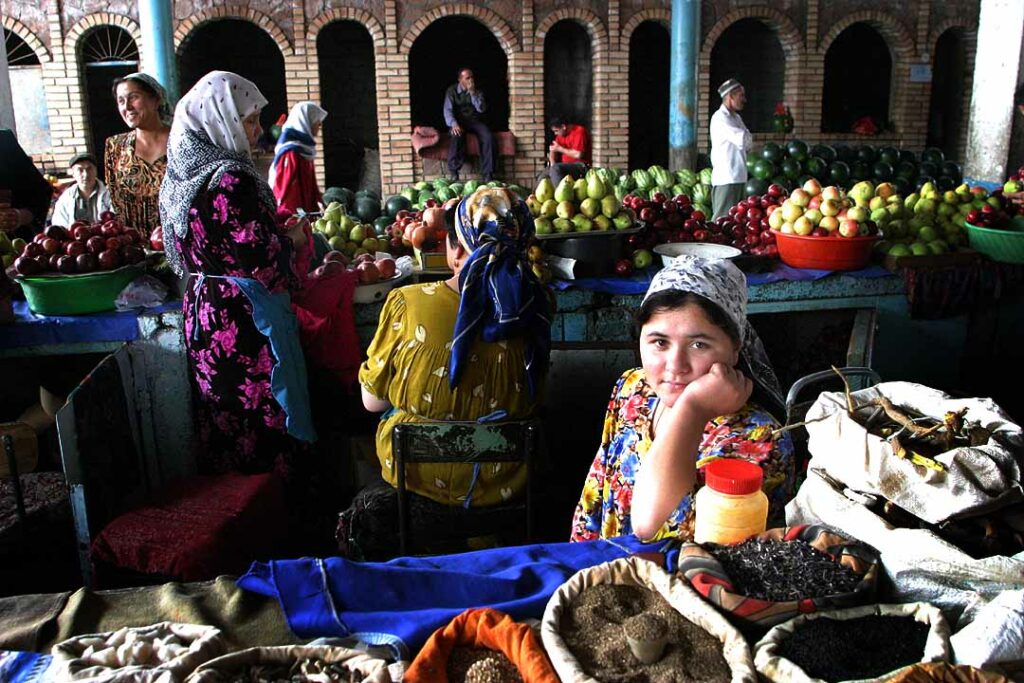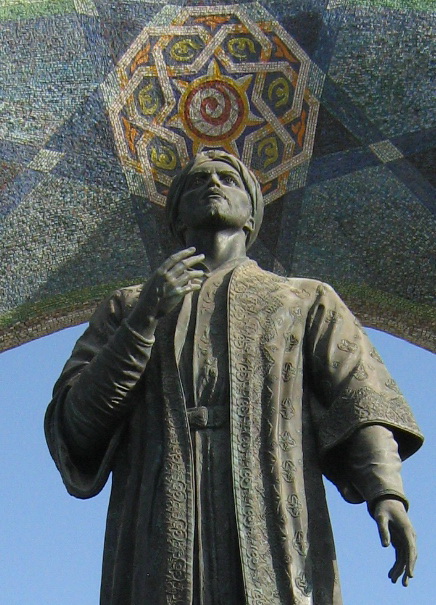In the midst of the Ak-Baital Pass, a sign reminds you that you are 4,655 meters above sea level. The Pamir Highway, leading through Tajikistan to Kyrgyzstan, is one of the strangest road trips you are ever likely to take – traveling to the very edges of Afghanistan and Uzbekistan. At Irkeshtam, road trippers might even be able to stare over the horizon into China.
The Pamir Highway is isolated, adventurous, and filled with sites for discerning travelers. Unmarred by the tourist throngs, making one’s own path through Tajikistan is for those want to see Central Asia from the open road.
ABOVE: From the monument to Rudaki to the vendors in the bazaars, Dushanbe combines fascinating Central Asian history with charming local culture.
The journey begins in the capital of Tajikistan, Dushanbe. Before hitting the road, there is much to see in the city, especially the bustling Shah Mansur Bazaar. Culture vultures will also want to check out the Museum of Antiquities and the Gurminj Museum of Musical Instruments. The botanical gardens are an excellent draw and, as you will find throughout Central Asia, the places of worship are truly stunning, Dushanbe’s enchanting blue-tiled Mevlana Yakub Charki mosque being a prime example.
From Dushanbe, the M41 highway stretches through the Kulyab region to the small town of Kalai-Khumb, where you can stare across the Panj River into a pleasantly green Afghani village. Surrounded by snow-capped mountains and the roaring river, this is a good place to bed down for the night in relative obscurity.
Hindu Kush Peaks and Silk Road
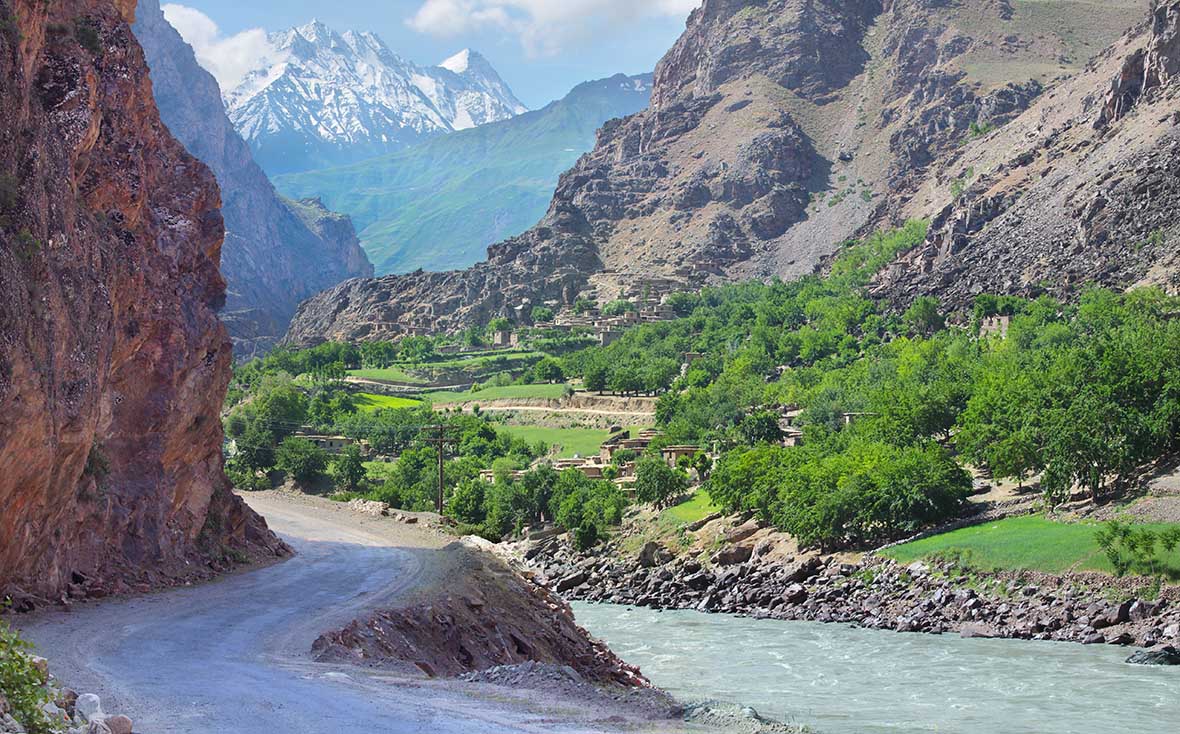
ABOVE: A high mountain path taking road trippers from Dushanbe to Khorog. The lush, green village across the river is Afghanistan.

The Ishkashim region is considered sacred and is presided over by a breathtaking view of the jagged peaks of the Hindu Kush

The next morning takes drivers to the city of Khorog nestled in the Pamirs, an area known for its poplar forests, and road trippers will blanche at the stark cliffs and roaring rapids leading to the city. The rivers here are clean and rushing. This is where the Shakhdara and Gunt meet the Panj.
Leaving Khorog behind, the next stop is the famous natural mineral springs. The stunning turquoise water and otherworldly rock formations surrounding the pools make for a memorable bathing experience. The area was also historically mined for coveted jewels and precious gemstones such as the Badakhsani rubies and Lapis lazuli.
The town of Ishkashim lies in a valley nearby, where you can visit an eclectic market that straddles the Afghan and Tajik border. Along the journey, staring east and if travelers are very lucky, you’ll be able to take in the mountains of China’s Xinjiang Autonomous Region. The Ishkashim region is considered sacred and is presided over by a breathtaking view of the jagged peaks of the Hindu Kush.
Historically linked to Silk Road trade routes, the M41 carries on to Langar, which offers the chance to visit the crumbling remains of an ancient Silk Road fortress and other ruins, as well as explore ancient Buddhist stupas.
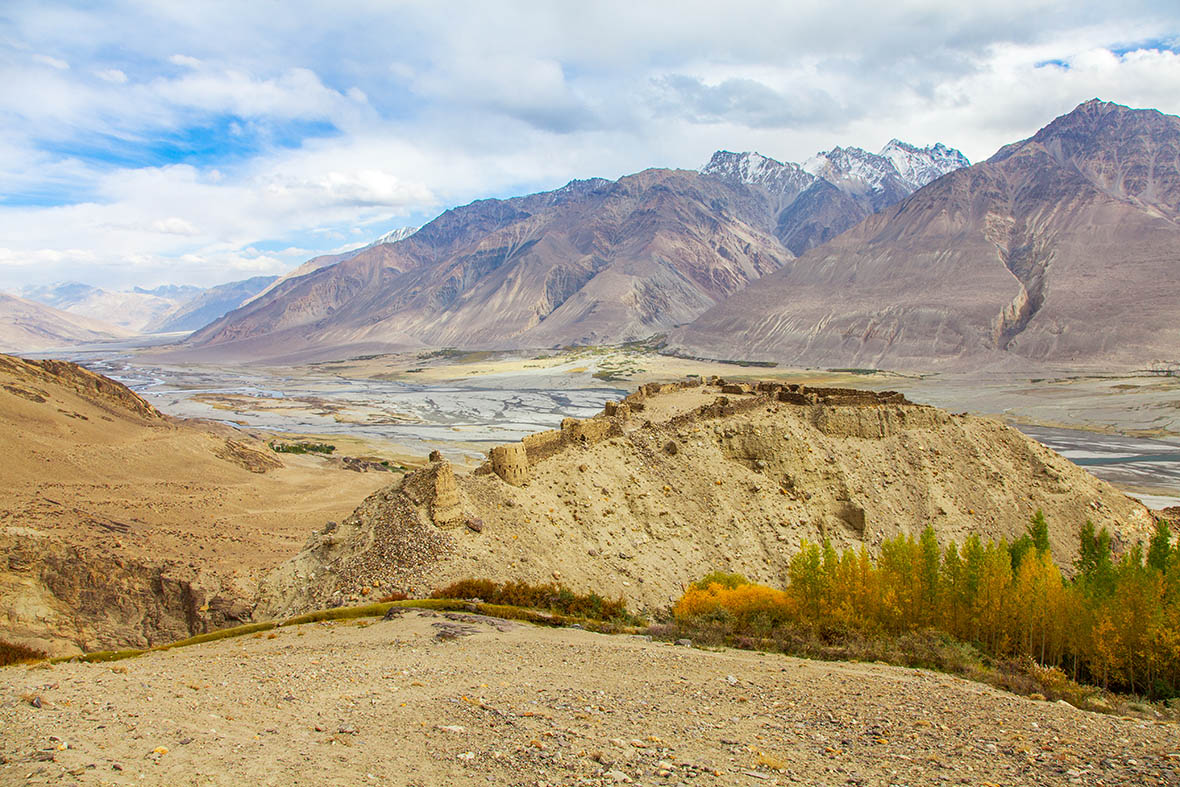
ABOVE: The 12th-century Yamchun fortress, Ishkashim, is one of the many ruins dotted along the Pamir Highway.
Drivers will find the healing hot springs of Bibi Fatima Zahra nearby – a dip in which is believed by the local women to rejuvenate the body and improve fertility. However, keep in mind that although locals and tourists alike bathe in the hot springs, in keeping with religious and cultural propriety, men and women bathe separately. The Tajik people are known for their hospitality so anticipate some questions and social invitations.
It is above Langer, however, where the best site is found. The cool mornings of the region are the perfect time to climb the mountainside above Langar to see ancient carvings and petroglyphs etched into the rocks. Here you are likely to encounter plenty of curious and excited children who will want to scramble up the rocks alongside you with the hopes of a few somoni in return for leading you to the best spots. Join the highway once again to reach Murghab, well known for its clear night sky and breathtaking views of the stars.
Long Road to Jalal-Abad
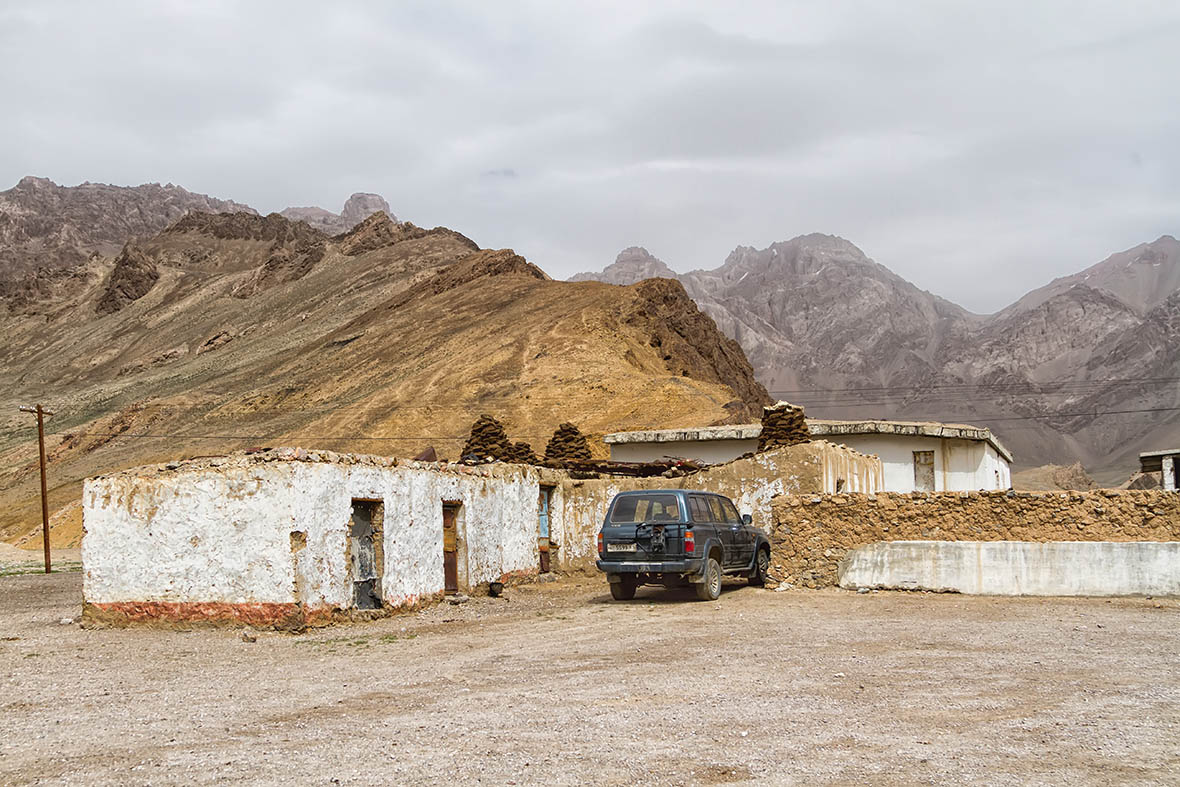
ABOVE: A vehicle resting in Murghab, an area famed for its views of the stars and wide, open countryside.
Traveling through the Pamirs, along the highest point of the road trip – the Ak-Baital Pass – drivers the majestic scenery follows straight to the idyllic Karakul Lake: snow-capped mountains, clear water, and pastoral bliss. The lake formed from a meteorite crater in what is commonly referred to as Death Valley; the local people tell tales of a mythical horse that rides ashore to either bless travelers or drag them into the depths of the lake.
In the more remote areas, people live simply, some still in traditional yurts and their cooking stoves powered by the only sustainable and readily available fuel around: dried yak dung. Though the landscape is often cold and unforgiving, road trippers will soon learn that the people are warm and friendly.
Drivers should prepare for a climate change as you descend back down to the lower altitude plains of Osh, which (much like Dushanbe) can reach scorching temperatures during the summer months.

ABOVE: A woman selling spices in Osh, one of the last stops on the long road to Jalal-Abad and one of the oldest towns in all of Kyrgyzstan.
In the Fergana Valley sits the town of Osh, the oldest city in Kyrgyzstan. After the wheel-gripping tight mountain passes above, take a break to browse colorful markets brimming with Uzbek and Kyrgyz shops before continuing on to Jalal-Abad, in the foothills of the Babash Ata Mountains.
The road trip ends in Jalal-Abad, near the Uzbekistan border. Jalal-Abad has a plethora of natural mineral springs and kurorts (spas) where visitors can relax and soak in the warm waters, perfect after a long week’s driving. It’s said that the waters at the Azreti-Ayup-Paygambar spa cured lepers. Perhaps the best site is a cafe perched 3,000 feet above the town, which offers a unique dining experience and excellent views of the local bazaar.
At the end of the trip, this long journey along the Pamir Highway, drivers will have seen Kyrgyzstan, Afghanistan, and perhaps even Uzbekistan and China. This trip through Tajikistan is filled with the wonder of the open road, white-knuckle cliff-side roads, and culture adventures found nowhere else in Central Asia. It’s a long road from Dushanbe to Jalal-Abad, but it never quite seems long enough.

